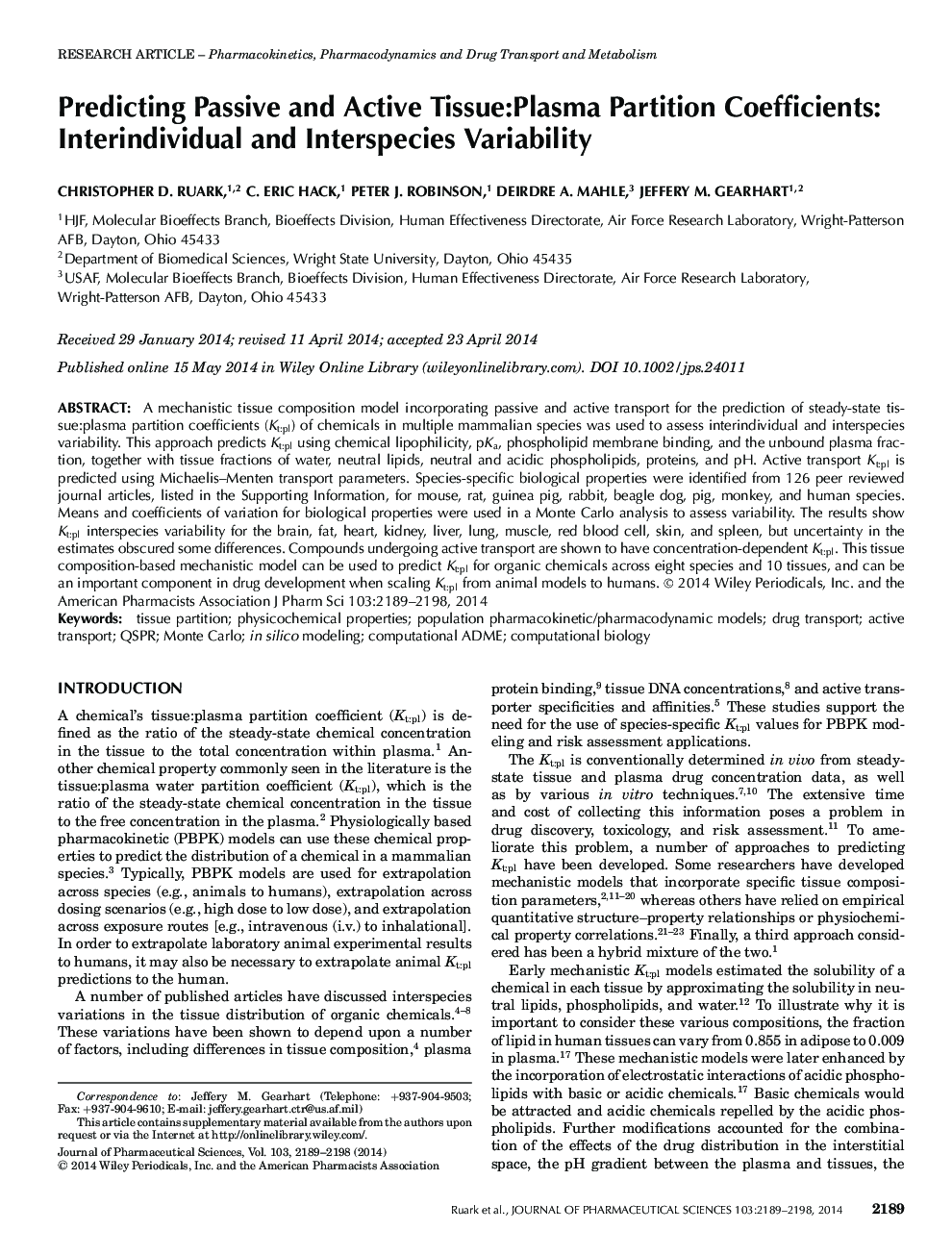| Article ID | Journal | Published Year | Pages | File Type |
|---|---|---|---|---|
| 10162468 | Journal of Pharmaceutical Sciences | 2014 | 10 Pages |
Abstract
A mechanistic tissue composition Model incorporating passive and active transport for the prediction of steady-state tissue:plasma partition coefficients (Kt:pl) of chemicals in multiple mammalian species was used to assess interindividual and interspecies variability. This approach predicts Kt:pl using chemical lipophilicity, pKa, phospholipid membrane binding, and the unbound plasma fraction, together with tissue fractions of water, neutral lipids, neutral and acidic phospholipids, proteins, and pH. Active transport Kt:pl is predicted using Michaelis-Menten transport parameters. Species-specific biological properties were identified from 126 peer reviewed journal articles, listed in the Supporting Information, for Mouse, rat, guinea pig, rabbit, beagle dog, pig, Monkey, and human species. Means and coefficients of variation for biological properties were used in a Monte Carlo analysis to assess variability. The results show Kt:pl interspecies variability for the brain, fat, heart, kidney, liver, lung, muscle, red blood cell, skin, and spleen, but uncertainty in the estimates obscured some differences. Compounds undergoing active transport are shown to have concentration-dependent Kt:pl. This tissue composition-based mechanistic Model can be used to predict Kt:pl for organic chemicals across eight species and 10 tissues, and can be an important component in drug development when scaling Kt:pl from animal Models to humans.
Keywords
Related Topics
Health Sciences
Pharmacology, Toxicology and Pharmaceutical Science
Drug Discovery
Authors
Christopher D. Ruark, C. Eric Hack, Peter J. Robinson, Deirdre A. Mahle, Jeffery M. Gearhart,
